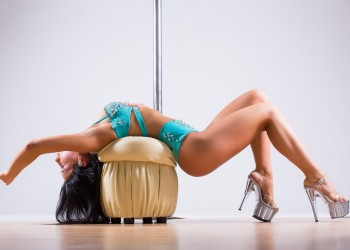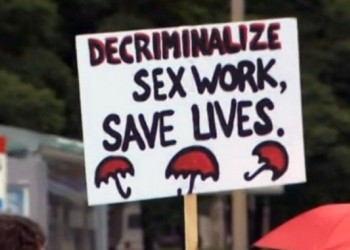The history of stripping and pole fitness

Pole fitness can be traced back to strippers in Canada in the 1970s. A group of strippers at a Canadian club decided to open up a pole studio to teach other dancers moves for the club. This was the first time that polework was taught as a form of fitness, and it quickly caught on.
Fawnia Mondey is credited as being the first person to branch out and teach civilians how to use the pole. She was also the first to create and distribute an instructional pole video which had worldwide success. Over time, as this craze swept the world and more pole studios popped up, pole became recognised as a sport and a form of fitness.
However, many pole fit dancers are trying to distance themselves from strippers, saying that they are not "real" athletes. This is despite the fact that without strippers, there would be no such thing as pole fitness! Sex workers are already heavily marginalized, and the last thing we need is for the people who borrow moves from our industry to feed into negative stereotypes.
In ancient times, stripping was often associated with religious rituals and ceremonies. Stripping was also a common form of entertainment in medieval Europe, where courtesans would perform erotic dances for guests at banquets. In the early 20th century, stripping became more popular in American sideshows and burlesque lounges. It wasn't until the late 20th century that pole fitness was invented by strippers as a way to stay fit and agile for their performances.
Despite the fact that pole fitness has its origins in stripping, manypole fit dancers try to distance themselves from that fact. They claim that pole fitness is a sport or hobby, and that it has nothing to do with strippers or sex work. However, this couldn't be further from the truth. Pole fitness is inextricably linked to stripping, and without strippers there would be no pole fitness as we know it today.
The art of the erotic dance can be traced back thousands of years to Paleolithic cave paintings and statuettes found in the Black Sea region. These dances were often performed as part of religious or spiritual rituals, and over time they evolved into a means of entertainment and profit for the performers. In th century Europe, female courtesans were paid to entertain men at lavish banquets, and by the early th century “showgirls” were common sights in burlesque theaters across Britain.

How are we redefining giving in our prosperous world? What makes us rethink our forms of giving when we have it so good in life? Why do so many successful men leave giving to themselves till w...
Read more

Toronto, Canada’s largest city, is a vibrant, multicultural metropolis known for its diversity, thriving arts scene, and bustling economy. Amidst the skyscrapers, cultural festivals, and bust...
Read more

The attitued that when you pay for sex you can lie there and receive all the work that the sex worker does on you is a bad thing. Why? And why do some men wonder why the women whom they pay do...
Read more



















